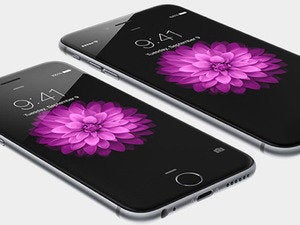Apple's iPad Air 2 is faster than its predecessors thanks to the A8X chip, which could pave the way for the company to put its homegrown silicon in large-screen tablets, TVs, cars and even laptops.
The A8X, an ARM architecture chip built by Apple, has enough horsepower for the company to bring 4K screens, better cameras and advanced sensors to its tablets, industry observers said. The 64-bit chip was specially designed for the new tablet and is not simply an adaptation of its cousin, the A8, which is in the iPhone 6 and 6 Plus.
Apple doesn't share information about future devices, but there have been rumors about a larger iPad and an Apple TV set-top box. The company is also chasing opportunities in the automotive and health markets.
"As long as they can be competitive with their silicon development, I see no limit to where they can put their chips," said Jim McGregor [CQ], principal analyst at Tirias Research.
Apple has made chips for iPhones, iPads and the Apple TV set-top box, but has relied on Intel for chips in Mac computers. Apple combines homegrown chips with software to ensure that mobile devices deliver the best performance and battery life.
The A8X is a monster chip for a tablet -- it has 3 billion [B] transistors, compared to 2 billion [B] in the A8, and more than two times the 1.3 billion [B] transistors in Intel's latest Core M chip for tablets and hybrids. Transistors are the fundamental building blocks for any electronic system, and the more you have, the more you can do with one chip. With more transistors, it's possible to add larger, higher-resolution screens and better cameras to tablets, which is what Apple aimed for the A8X chip.
A strong visual experience is becoming important on large-screen devices, at home or traveling. Graphics in the iPad Air 2 are 2.5 times faster than in its predecessor. Meanwhile, the A8 chip in iPhones -- which doesn't provide the level of graphics of the A8X -- is more about balancing performance and battery life.
"That is a reflection of Apple looking at the market more holistically and not only do they want to hit the high-end, but they also want to take a nuanced approach to targeting the market," said David Kanter [CQ], analyst at The Linley Group.
Meanwhile, a new Apple TV set-top box could be on its way, and the strong graphics in A8X could add support for 4K TVs, said Nathan Brookwood [CQ], principal analyst at Insight 64.
"Apple wants to make sure it operates with 4K displays," Brookwood said.
Apple's mobile devices and laptops don't stand out for gaming, but the A8X could lead to a separate product that enables 4K gaming on TVs, Brookwood said. And while it's not yet clear whether Apple will ever release a TV set, the chip lays the groundwork for the company to build a 4K TV, Brookwood said.
There's nothing to stop Apple from taking the A8X chip, packing more graphics cores and cache around it, and using it in a desktop or laptop, said Dean McCarron [CQ], principal analyst at Mercury Research, though he added that the possibility is remote.
Apple has shown a willingness to switch architectures and has internal resources committed to ARM. In 2006, the company stopped using Motorola's PowerPC chips and transitioned to Intel chips in its Macs.
A transition to ARM in Macs, though, would require wholesale software changes since the architectures are different. Intel chips are still considered superior in handling applications such as Final Cut Pro X, which are critical to high-end users.
Tirias Research's McGregor said the A8X could lead the way for Apple to develop custom chips for in-car entertainment systems. Apple's CarPlay in-car entertainment software is already compatible with hardware from Pioneer Electronics. But if Apple gets deeper into this market, it most likely would want its software to be used with its chips. This could be a problem for car makers who might be wary about relying on Apple for software and hardware.
Meanwhile, Apple has the resources to develop custom chips for a variety of devices, but also wants to make sure the products sell in volume before committing, Kanter said.
An example is the wearable market. Apple will ship the Apple Watch early next year, but it's unclear whether it developed its own chip for the smartwatch. Industry experts said extremely low-power chips are difficult to make, and need to blend with sensors. Apple likely acquired the chip technology from an outside vendor.
Apple is still testing the market with the watch, and won't commit to making a chip until the device ships in the millions, Kanter said, adding that even some chip technology for the first-generation iPhone was borrowed from Samsung.
"That's a sensible approach to take when doing a device when the volume is not clear," Kanter said. "When I look at the Apple watch -- the jury is still out on [wearables]."
Agam Shah covers PCs, tablets, servers, chips and semiconductors for IDG News Service. Follow Agam on Twitter at @agamsh. Agam's e-mail address is agam_shah@idg.com






















